What material is better to finish the walls in the kitchen?
The food preparation room is a combination of cleanliness and practicality, comfort and modern decor - therefore, choosing the best material for wall decoration in the kitchen, a multifaceted assessment is carried out. The primary role is played by the ability to withstand high humidity, high temperatures, grease and other contaminants.
Modern materials
The kitchen is a specific room, so the finishing material should not be afraid of:
- Moisture, steam and high temperatures.
- Use of detergents.
- Bacteria, fungi.
Different types of finishes are easy to combine with each other, this quality is used to achieve the optimal ratio of "operation-decorative".
Each material has its pros and cons.
Tiles (ceramics)
Modern tiles are diverse in color, size, texture. Manufacturers decorate products with photo prints, mirror coatings, inclusions of metal components that imitate glass. 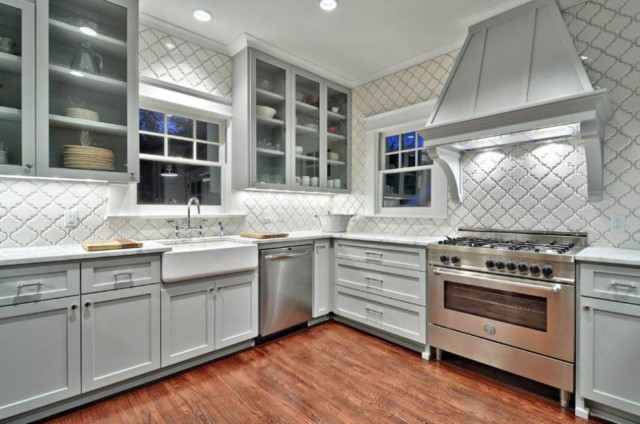
Advantages of ceramics:
- masking defects in the base - the tile hides cracks and irregularities, protects the walls from destruction.
- ease of maintenance.
- durability - after repeated treatments with detergents, the material does not lose colors, the gloss is not erased.
- additional decoration - methods of laying and combining tiles of different sizes are selected, panels are compiled.
Minuses:
- installation complexity - you will have to involve professionals or decide how to finish the walls in the kitchen, except for tiles.
- the complexity of disassembly - to repair the wiring or change the design of the kitchen, it will take a lot of time, physical strength and a special tool.
The size of the tile should be taken into account - a large one visually reduces the room and vice versa.
Mosaic
And in our time (2017-2018), the material looks original on the surface, fits well into small rooms.
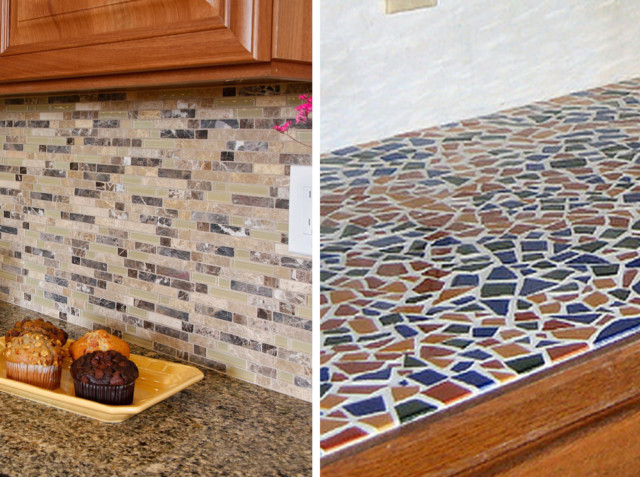
There are 2 types:
- Glass - increased strength, but expensive.
- Ceramic - made by analogy with a tile, a glazed coating is applied.
pros
Decorative and performance qualities.
- Durability - used as a floor covering.
- Durability.
- Ease of care.
Minuses:
- The complexity of installation involves calling professionals.
Painting
To finish the walls in the kitchen without the cost of paying professionals, it is worth remembering moisture-resistant acrylic or latex paints. There are glossy and matte varieties: the first looks great and is easy to clean, but the second better hides surface imperfections.
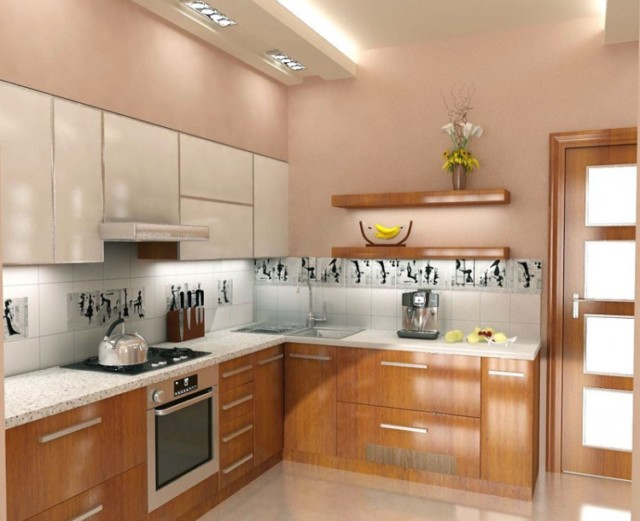
Advantages:
- Environmental friendliness.
- Vapor permeability - thanks to this, a normal humidity regime is created in the kitchen, the walls under the paint "breathe", mold does not grow on them.
- moisture resistance;
- High adhesion (adhesion) with the base.
- Relative cheapness.
Disadvantages of painting kitchen walls:
- the obligatory thorough preparation of the base - the wall is cleaned of the previous coating, grease stains are removed, washed, dried. After that, they clean it with sandpaper, wipe it with a dry cloth and apply an antiseptic primer;
- selection of special paint - semi-gloss or semi-gloss, recommended for use in the kitchen (it costs more than conventional dyes).
Wallpaper
Distinguished by a palette of colors and a variety of patterns. The quality and durability of wallpaper in relation to the conditions of the kitchen depends on what type they belong to: 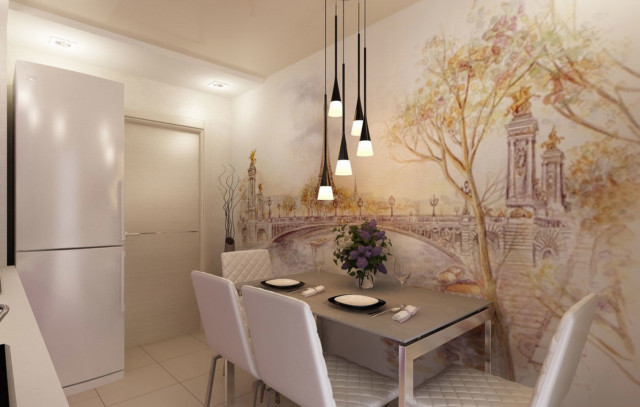
- Latex - the answer to the question of how to clad the walls in the kitchen is inexpensive, although the durability of the coating is measured by 20 wipes with a damp cloth.
- Vinyl is a moisture-resistant (albeit less breathable) option with a protective PVC film that allows for mild products and sponge application.
- Compact vinyl - differ from the previous type in a more hygienic coating, they can even be washed with a brush.
- Non-woven (for painting) - light, durable, vapor-permeable, do not swell or shrink when wet, non-woven fabric can be repainted up to 20 times.
- Glass fiber is a durable option, which is characterized by resistance to water, acids and even fire, withstand repeated repainting.
The disadvantages of wallpapers are their relative fragility: they can be accidentally scratched, they deteriorate from regular washing and suffer from leaks.
Decorative plaster
This finishing coating is distinguished by the richness of textures and shades. For the kitchen, options with the effect of "marble chips", "bark beetle", Venetian plaster are suitable. They give the walls an attractive look, and toning brings the finishing touch to the kitchen interior.

Pros:
- The imposition of a thin layer - allows you to achieve strength, while saving material.
- Resistant to heat and moisture.
- Hardness, wear resistance.
- Ease of maintenance.
- Relative cheapness.
Minuses:
High price, which is offset by low consumption of the mixture.
A rock
The material is popular, used in the interior to accent design elements. Easily combined with other types of cladding.
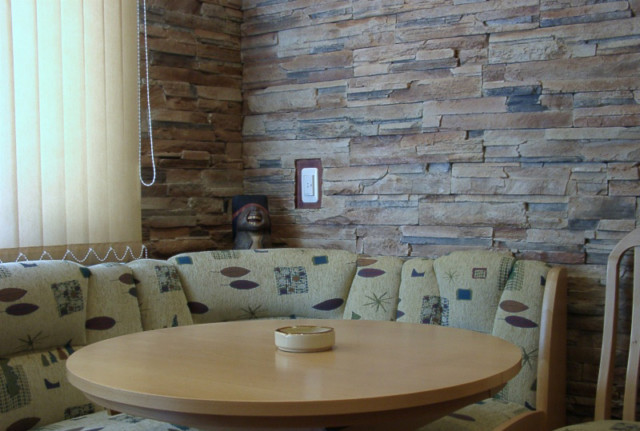
Pros:
- Light weight.
- Durability.
- Environmental friendliness.
- Ease of care.
Brick
Often used in loft style - the use of raw materials. The contrast of the design allows you to highlight and decorate the space, for example, a work or dining area (table and chairs).
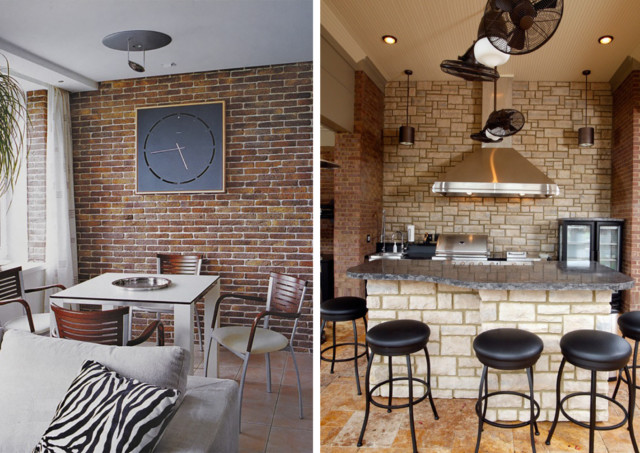
Cork
Made from tree bark. It is now available in the form of tiles, rolls, paper-based wallpaper and in liquid form. Plates have two layers: 1 - substrate, 2 - cork veneer.
The budget option is wallpaper, the principle of sticking does not differ from the usual ones. Liquid cork is applied with a sprayer, and is also used for exterior decoration due to its high protection against moisture. Has soundproof properties. No seams.
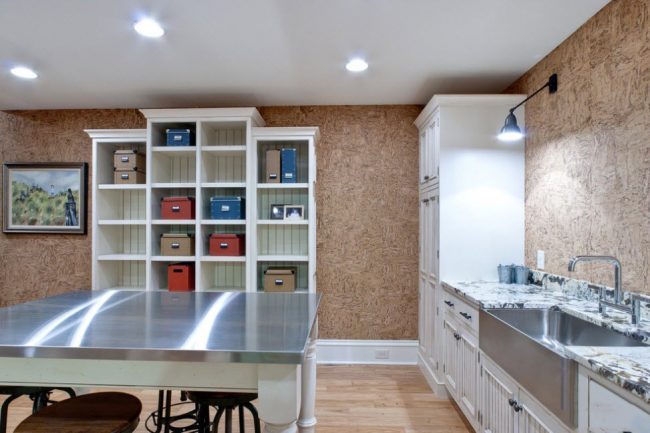
clapboard
If you need to sheathe a home (non-professional) kitchen, a hallway, your living quarters in the country or a separate wall, use the following types:
- Double-sided seamless.
- Europrofile.
- Block house.
- Imitation brickwork.
- Imitation of logs.
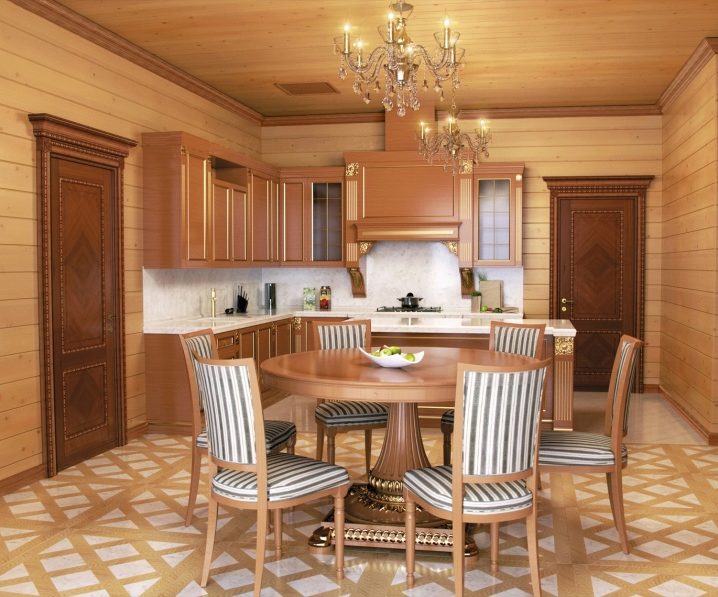
Pros:
- Environmental friendliness.
- Strength.
- Price availability.
Pipes (gas, heating), sewn up with clapboard look stylish. You can use plastic in tone or contrasting colors.
Plastic
These are PVC panels. Mounted either on the frame or glued directly to the surface.

Pros:
- Electrical safety.
- Moisture resistance.
- Ease of care - the use of detergents.
- Not susceptible to bacteria and fungi.
- Variety of colors and shades.
- Budget price.
Minuses:
Does not tolerate high temperatures - it is forbidden to place near open flames.
How to choose
The process of finishing rooms in Khrushchev apartments or the private sector dictates its own design rules. The question inevitably arises, how and what is the best way to finish the walls in a tiny kitchen.
Ways to visually increase the space of the kitchen in Khrushchev are:
- Enlargement of doorways.
- Not solid tiling, but only a kitchen apron.
- Applying washable wallpaper in calm, cool tones to the walls.
You can replace the wallpaper by painting the walls with light glossy paints - they also visually expand the space. At the same time, skinali, a kitchen apron made of glass with a color print, will become a bright color spot.
Or they pick up moisture-resistant photographic wallpapers and place them in the form of inserts between plain wallpaper strips. The main thing is that the images are not too large. Photos of vegetables, fruits, drinks will be appropriate on the walls.
For the private sector, textured natural materials are popular: stone, wood. In an apartment with sufficient footage, tiles, MDF or plastic panels are appropriate.
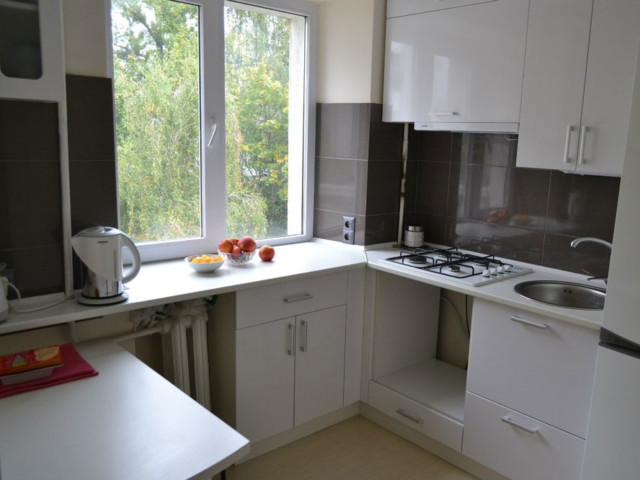
A variety of materials allows you to clad the walls in the kitchen by any available method, and what exactly is decided in the context of the overall design plan and taking into account hygiene requirements.
Additional wall finishes
Apron - the gap between the work surface and hanging cabinets - requires a particularly careful selection of finishing material. This section of the wall is exposed to heat, grease and fumes, and needs to be mechanically cleaned.
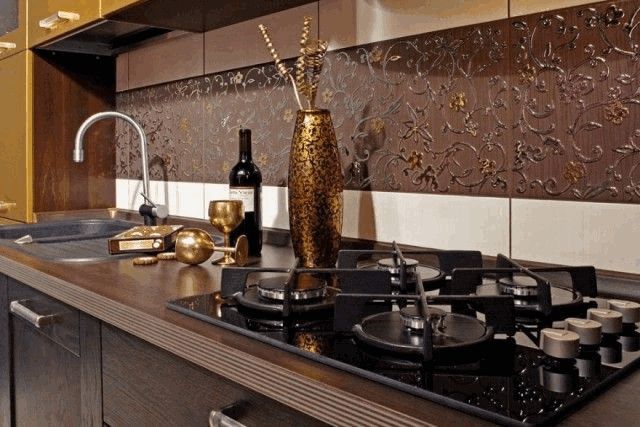
The most acceptable options for finishing the apron:
- tile or mosaic. The entire space, or its local zones, are laid out with tiled material: above the sink and stove. At the same time, the wall is covered in height with a margin (going under the cabinets) so that there is no gap for the accumulation of dirt. For ease of maintenance of the apron, smooth tiles are preferred. Tile joints are treated with grout or protective varnish.
- Decorative plaster. Its positive qualities are described above. The apron treated with a wear-resistant composition also becomes a stylish element of the kitchen. Consumption - 2.5-3 kg per sq.m, it is profitable and beautiful.
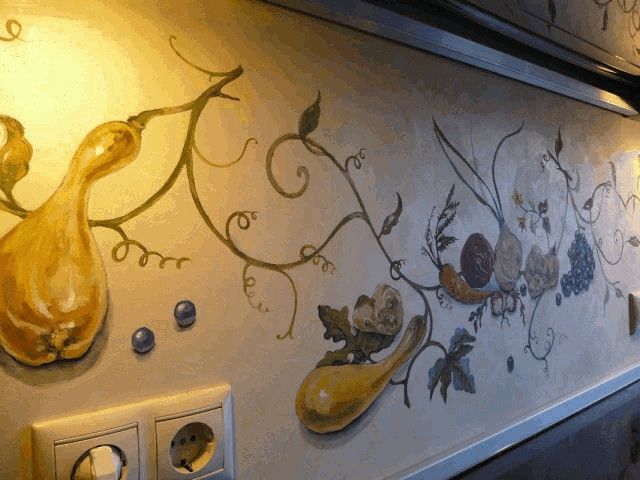
- Glass. Hardened material panels are made no thinner than 6 mm, which ensures shock resistance. Aprons are painted using a special technology. The technique of photo printing is also used to obtain any images. They fix the panel with canopies that are screwed to the wall - this is better than drilling mounting holes in the glass.
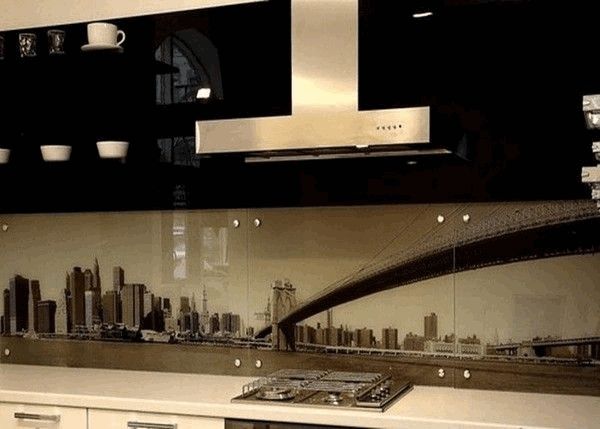
The advantages of a glass apron, in addition to strength, are thermal resistance, low abrasion, environmental friendliness - the panel does not emit toxins when wiped with chemicals.
- The laminated panel from a chipboard, MDF. Synthetic resin coating has good strength, low abrasion, heat resistance. Minus - insufficient resistance to moisture, compared with tiles and glass, and plus - low cost.
After watching the video, you will learn how you can redo the kitchen.
